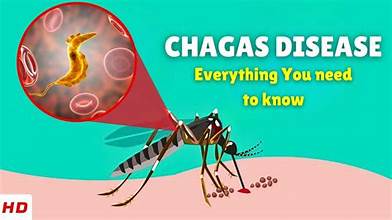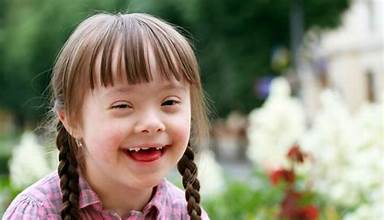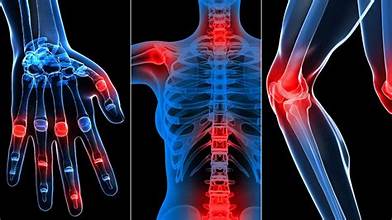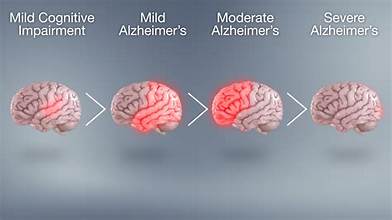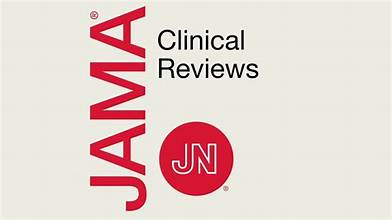What is Chagas Disease?
Chagas disease, also known as American trypanosomiasis, is a parasitic infection caused by Trypanosoma cruzi. The parasite is mainly transmitted through triatomine insects commonly called “kissing bugs” which are found in Mexico, Central America, and South America. While the disease is most prevalent in Latin America, cases have also been reported in the United States, especially among people who migrated from endemic regions.
One of the biggest challenges with Chagas disease is that most people are unaware they are infected. The initial stage, known as the acute phase, may produce mild or no symptoms, which makes it easy to overlook. When symptoms do appear, they may include fever, fatigue, swollen lymph nodes, skin lesions, or swelling around the eyes.
If left untreated, the disease often progresses into the chronic phase, which can last for decades without noticeable signs. Over time, however, serious health problems may develop, especially involving the heart and digestive system. Complications can include irregular heartbeat, heart enlargement, heart failure, difficulty swallowing, and severe constipation due to an enlarged colon. In some cases, Chagas can even lead to sudden cardiac arrest.
Because of its silent progression, Chagas disease is often called a “hidden threat” in the Americas. Early diagnosis through blood tests and timely treatment with anti-parasitic medications are essential to prevent long-term complications. Public health awareness, improved screening, and vector control remain critical strategies to reduce the impact of this neglected tropical disease.
Distribution of Chagas Disease & Numbers as of 2024–2025
Chagas disease used to be largely restricted to rural areas throughout Latin America. But thanks to urbanization, greater population mobility, and changes in living conditions, many infected individuals now reside in cities. The disease has also been detected in 44 countries including the U.S., Canada, many European nations, plus some in the Western Pacific, Africa, and the Eastern Mediterranean.
Globally, it is estimated that 6–7 million people are infected with Trypanosoma cruzi, the parasite that causes Chagas disease in addition, over 100 million people are considered to be at risk. In the United States specifically, about 280,000 to 300,000 people are currently estimated to be infected, many of whom remain undiagnosed.
Transmission of Chagas Disease:
In Latin America, Trypanosoma cruzi the parasite that causes Chagas disease is primarily spread through the feces or urine of infected triatomine insects, often called “kissing bugs.” These insects usually hide during the day inside cracks of walls, roofs, and nearby structures such as animal shelters, chicken coops, or storage areas in rural or semi-urban settings. At night, they come out to feed on the blood of humans and animals. After biting exposed skin commonly, the face they often defecate or urinate close to the wound. The parasite enters the body when the infected waste is accidentally rubbed into the bite site, mucous membranes (like the eyes or mouth), or other skin breaks. Various animals, including opossums, serve as natural reservoirs of the parasite, helping to maintain transmission cycles.
Other routes of transmission include:
- Contaminated food or drink: Outbreaks may occur when food or beverages come into contact with infected insect feces, urine, or wild animal secretions.
- Congenital transmission: From an infected mother to her baby during pregnancy or delivery.
- Blood transfusion: Receiving infected blood or blood products.
- Organ transplantation: Particularly involving the heart, kidney, or other organs from infected donors.
- Laboratory exposure: Accidental contact with the parasite in research or medical settings.
Recognizing the Signs of Chagas Disease:
Chagas disease can present a wide range of symptoms, from very mild to serious and life-threatening, often making it difficult to distinguish from other common illnesses. In many cases, people experience little or no discomfort in the early stages, and the infection may go unnoticed for years or even decades. However, as the disease progresses, it can cause long-term complications, especially affecting the heart and digestive system.
During the acute stage which lasts for the first few weeks or months after infection symptoms may resemble the flu and include fever, fatigue, muscle aches, headaches, and general discomfort. Some people may develop a rash, lose their appetite, or experience diarrhea and vomiting. A small percentage of patients also show swelling near the eye or face at the site of infection, along with enlarged lymph nodes.
If untreated, the disease can advance into the chronic stage, where more serious complications arise. This phase may occur years later and is often marked by heart problems such as irregular rhythms or heart failure. Digestive issues are also common, including difficulty swallowing food or passing stool, both of which stem from damage to the intestinal muscles.
Chagas disease is therefore a condition that requires early detection and monitoring, as its impact can shift dramatically from mild, unnoticed symptoms to severe health challenges over time.
Diagnosis of Chagas Disease, Tests and Medical Evaluation:
Diagnosing Chagas disease begins with blood tests, which are used to detect antibodies against the parasite Trypanosoma cruzi. Since no single test is 100% reliable, doctors often confirm the diagnosis using two or more different serological tests to ensure accuracy. In the early (acute) phase, the parasite may also be seen directly under a microscope in a blood smear.
When the infection progresses to the chronic stage, additional tests are usually required, especially if a patient develops heart or digestive problems. Cardiac evaluations may include an electrocardiogram (ECG/EKG) to detect abnormal rhythms, an echocardiogram to assess heart function, or in severe cases, a cardiac MRI or biopsy to check for muscle damage. Imaging tools like X-rays or CT scans can help detect an enlarged heart or changes in the digestive tract.
For gastrointestinal complications, procedures such as an upper endoscopy or colonoscopy may be performed to identify structural damage, blockages, or motility issues caused by the parasite. In some cases, barium swallow studies or contrast imaging are used to evaluate swallowing difficulties and intestinal function.
Early detection through proper testing is crucial because timely treatment can prevent or reduce long-term complications. Since Chagas disease often remains “silent” for years, routine screening is also recommended for people living in or coming from endemic areas, as well as for pregnant women, blood donors, and organ donors to avoid transmission.
Treatment of Chagas Disease:
Chagas disease can be managed with two main anti parasitic drugs: benznidazole and nifurtimox. These medications work by eliminating the parasite and are most effective when administered during the acute phase, including cases of congenital infection. Their effectiveness tends to decrease as the infection becomes chronic, and older individuals are more likely to experience side effects.
Treatment is also recommended for patients whose infection has reactivated (such as those with weakened immune systems) and for individuals in the early chronic stage, particularly young women and those of childbearing age. This approach helps reduce the risk of congenital transmission.
Even adults without obvious symptoms are often advised to undergo treatment since anti parasitic drugs can help slow or prevent disease progression. However, the decision must consider the treatment duration (which can last up to two months) and the potential for side effects, which occur in as many as 40% of adult patients.
Certain groups should not receive these medications, including pregnant women and people with liver or kidney failure. Additionally, nifurtimox is not suitable for patients with a history of neurological or psychiatric conditions.
Beyond anti parasitic therapy, individuals with heart, digestive, or neurological complications often require lifelong monitoring and specialized medical care to manage the long-term consequences of the disease.
Control and Prevention of Chagas Disease:
Complete eradication of Chagas disease is not possible due to the wide distribution of triatomine bugs and infected wild animals across the Americas. Therefore, the main public health goals focus on breaking transmission routes, ensuring early diagnosis and treatment, and providing lifelong care for infected individuals.
Currently, there is no vaccine for Chagas disease. The most effective prevention strategies include:
- Vector control: spraying homes and surrounding areas with residual insecticides, improving housing structures, and maintaining household cleanliness to reduce insect habitats.
- Personal protection: using bed nets, sealing cracks in walls/roofs, and practicing good hygiene in food preparation, storage, and transport.
- Medical screening: testing blood and organ donors, as well as newborns and children of infected mothers, to prevent transfusion- and transplant-related transmission.
- Education and awareness: community-based campaigns to raise awareness of risks, prevention, and treatment options, tailored to local conditions.
- Early healthcare access: promoting rapid diagnostic tests, molecular tools, and cost-effective screening algorithms to detect infections sooner.
- Surveillance systems: establishing national reporting networks to track acute and chronic cases, which remain limited in many countries.
- Research and innovation: advancing new diagnostic methods, safer medications, and integrated “One Health” approaches to address environmental and social risk factors.
Importantly, prevention is also cost-effective vector control measures are significantly cheaper than treating the long-term complications of chronic Chagas disease. Strengthening primary healthcare workers’ training and involving communities remain essential for successful prevention and control.
Conclusion:
Chagas disease remains a serious yet often overlooked public health challenge, particularly in the U.S. and other non-endemic countries where many cases go undiagnosed. Early detection, timely treatment, and strong prevention strategies are key to reducing its long-term impact. With greater awareness, improved screening, and ongoing research, it is possible to protect vulnerable populations and minimize the burden of this “hidden threat” in the years ahead.https://healthliker.com/
